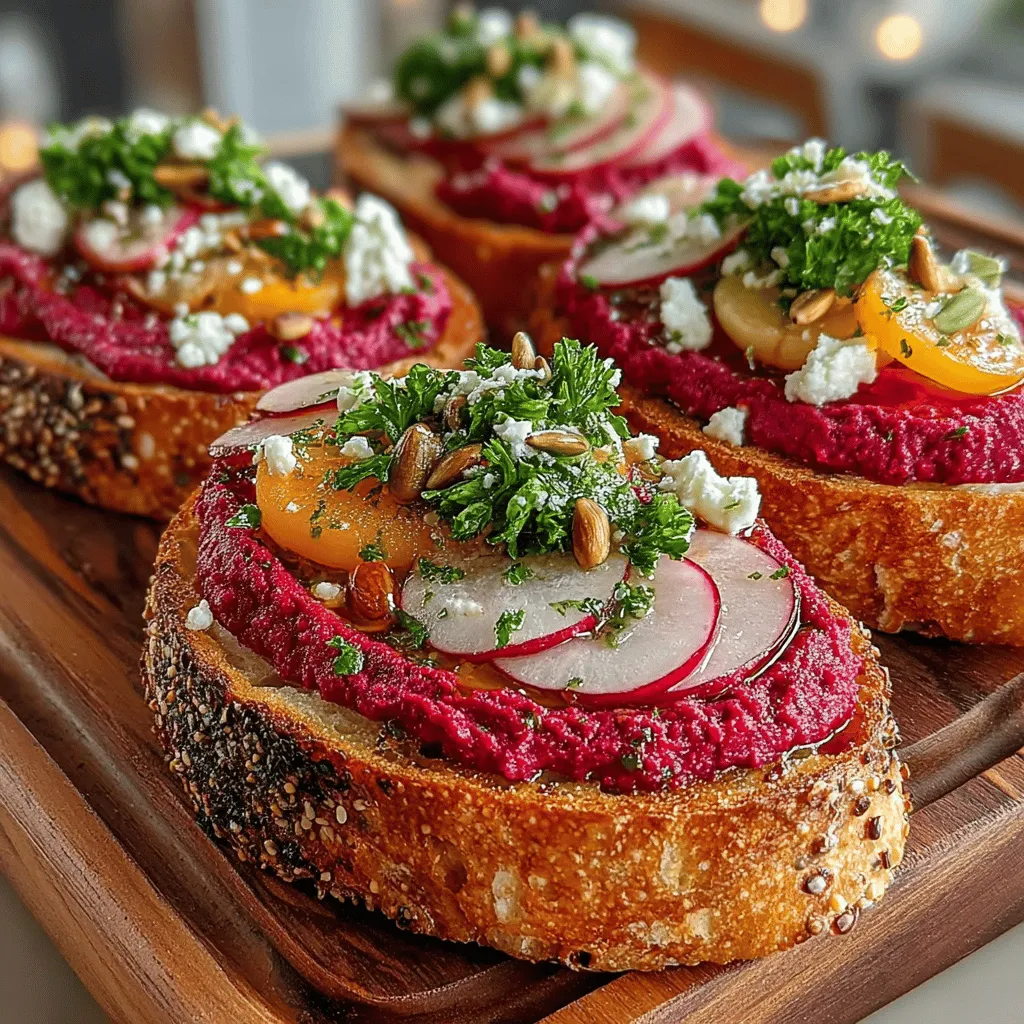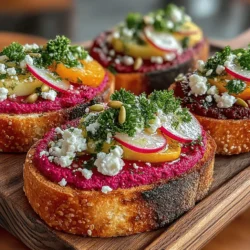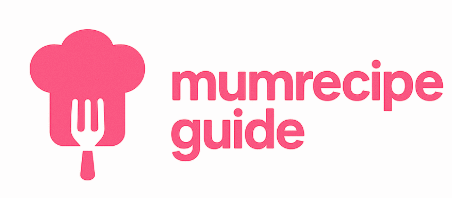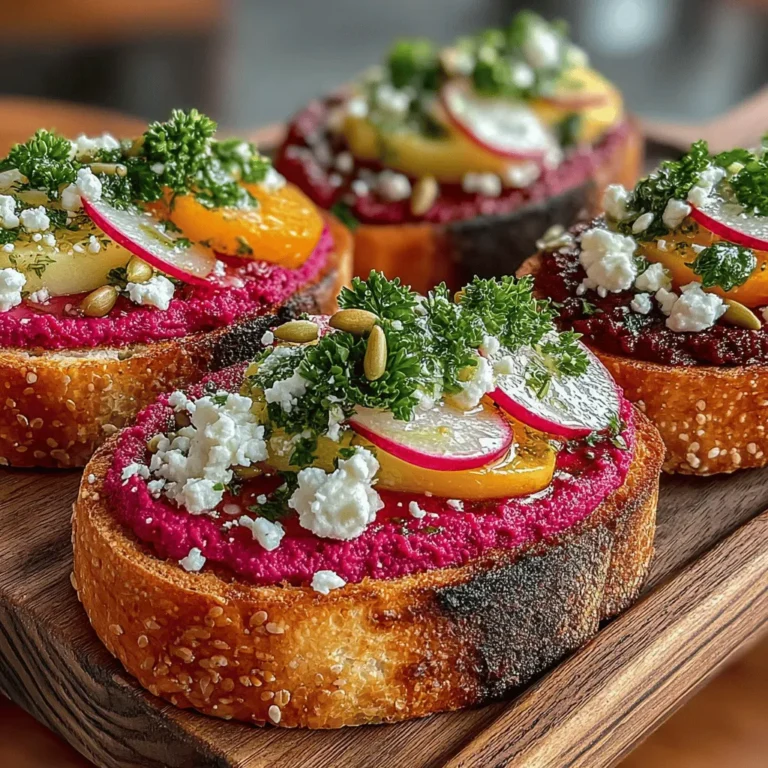Vibrant Roasted Beet Hummus Toast: A Wholesome Delight
In recent years, the culinary world has embraced a delightful trend that combines the creamy richness of hummus with the satisfying crunch of toast. This innovative pairing has made its way into brunch menus, cafes, and home kitchens alike, offering a versatile option that caters to both taste and health. Among the myriad of flavors and combinations, one standout is the vibrant roasted beet hummus toast. This dish not only boasts a visually stunning presentation with its deep magenta hue but also packs a nutritional punch that can elevate any meal—be it breakfast, lunch, or a quick snack.
Roasted beet hummus is a unique twist on the traditional chickpea-based spread, infusing earthy sweetness from the beets while maintaining the creamy texture that hummus is beloved for. This recipe celebrates the natural flavors of its ingredients, creating a wholesome and satisfying dish that can be enjoyed on its own or as part of a larger spread. Moreover, the health benefits of beets and chickpeas make this toast not just a treat for the eyes but also a nourishing option for the body.
Understanding the Ingredients
To truly appreciate this vibrant roasted beet hummus toast, it’s essential to delve into the key ingredients that make it not only delicious but also a guilt-free indulgence.
The Star Ingredient: Beets
Beets, often overlooked in favor of more popular vegetables, are a nutritional powerhouse. They are rich in vitamins and minerals, including folate, manganese, and potassium, which play vital roles in maintaining overall health. Additionally, beets are loaded with antioxidants, particularly betalains, which have been shown to reduce inflammation and oxidative stress in the body.
One of the standout health benefits of beets is their ability to improve digestion. They are a great source of dietary fiber, which promotes gut health and regularity. Furthermore, research suggests that the nitrates found in beets can enhance cardiovascular health by improving blood flow and lowering blood pressure. This makes roasted beets not only a colorful addition to your plate but also a smart choice for those looking to support their heart health.
Chickpeas: The Protein Powerhouse
Chickpeas, the base of traditional hummus, are a staple in many diets, particularly for those seeking plant-based protein. They are packed with protein and fiber, making them an excellent choice for maintaining energy levels and promoting satiety. Incorporating legumes like chickpeas into your meals can help support weight management and improve digestive health.
In addition to being a great source of protein, chickpeas are rich in a variety of vitamins and minerals, including iron, magnesium, and vitamin B6. These nutrients play crucial roles in energy metabolism and overall well-being. By blending chickpeas with roasted beets in this hummus recipe, you create a creamy spread that not only satisfies hunger but also nourishes the body.
Tahini and Olive Oil: Creaminess and Flavor
No hummus is complete without tahini, a paste made from ground sesame seeds that adds a distinct flavor and creaminess to the dish. Tahini is not only delicious but also highly nutritious, providing healthy fats, protein, and essential vitamins and minerals like calcium and magnesium. Its rich, nutty flavor complements the sweetness of beets, creating a harmonious blend that is both satisfying and indulgent.
Olive oil, another key ingredient in this recipe, is renowned for its health benefits. As a staple of the Mediterranean diet, olive oil is rich in monounsaturated fats, which are known to promote heart health and reduce inflammation. Its robust flavor enhances the overall taste of the hummus, making each bite a delightful experience. Additionally, drizzling a bit of olive oil on top of the finished toast adds a touch of elegance and richness.
Fresh Herbs and Additional Toppings
Fresh herbs play a crucial role in elevating the flavor profile of roasted beet hummus toast. Whether you choose to sprinkle fresh parsley, dill, or cilantro on top, these herbs not only add a burst of freshness but also bring their own health benefits. For example, parsley is high in vitamins A, C, and K, while dill has been linked to digestive health.
To further enhance your hummus toast, consider adding optional toppings such as crumbled feta cheese, sliced avocado, or a sprinkle of sesame seeds. Each of these additions brings its own unique flavors and textures, as well as additional nutritional benefits, making your toast not just a meal but a mini culinary adventure.
Step-by-Step Guide to Making Vibrant Roasted Beet Hummus Toast
Now that you understand the health benefits and flavors of the key ingredients, let’s dive into the preparation of the vibrant roasted beet hummus toast. The first step in this delicious journey is selecting and preparing the beets, which will serve as the cornerstone of your hummus.
Preparation of Beets
Choosing the right beets is crucial for achieving the best flavor and texture in your hummus. When selecting beets at the grocery store or farmers’ market, look for firm, smooth-skinned vegetables without any soft spots or blemishes. Smaller beets tend to be sweeter and more tender, making them ideal for roasting.
Once you have your beets, the first step is to wash them thoroughly to remove any dirt or debris. It’s important to handle beets carefully, as their vibrant color can stain surfaces and hands. After washing, trim the tops and roots, but be sure to leave about an inch of the stems intact to prevent bleeding during roasting, which helps retain their color and moisture.
To roast the beets, preheat your oven to 400°F (200°C). Wrap each beet individually in aluminum foil, creating a tight seal. Place the wrapped beets on a baking sheet to catch any drips, and roast in the oven for about 45 to 60 minutes, depending on their size. You’ll know they’re done when a fork or knife easily pierces through the flesh.
If you prefer alternative cooking methods, you can steam or boil the beets. Steaming generally preserves more of the nutrients and flavor, while boiling can lead to a slightly softer texture. However, roasting tends to enhance the natural sweetness and earthy flavor of the beets, making it the preferred method for this hummus recipe.
As the beets roast, you can use this time to prepare the other ingredients for your hummus. This efficient approach not only saves time but also ensures that everything is ready to go once the beets are cool enough to handle.
With the beets roasted and ready, you will soon be on your way to creating a delicious and nutritious roasted beet hummus toast that is sure to impress. Stay tuned for the next part of this article, where we’ll explore the blending process and how to assemble your toast for a vibrant and satisfying meal.

Crafting the Beet Hummus
To create the perfect roasted beet hummus, start by combining the roasted beets with traditional hummus ingredients. In a food processor, add 1 cup of cooked, peeled, and chopped roasted beets, 1 can (15 ounces) of drained and rinsed chickpeas, 2 tablespoons of tahini, the juice of one medium lemon, 1-2 garlic cloves (adjust according to your preference), and a pinch of salt. Blend until smooth.
In-depth Tips for Achieving the Perfect Texture and Flavor Balance
1. Texture: For creamy hummus, ensure your beets are well-roasted and soft. If the mixture is too thick, add a tablespoon of water or olive oil at a time until you reach your desired consistency. A high-powered blender can make a significant difference in achieving a silky texture.
2. Flavor Balance: Taste your hummus after blending and adjust the flavors accordingly. You can add more lemon juice for acidity, garlic for a sharper taste, or tahini for a nuttier flavor. A sprinkle of cumin or smoked paprika can also enhance the depth of flavor.
3. Chill Before Serving: Allow the hummus to sit in the fridge for at least 30 minutes before serving. This resting period helps the flavors meld together beautifully.
Guidance on Adjusting Seasonings and Thickness According to Personal Preference
Everyone has unique taste preferences, and this hummus can easily be tailored to suit your palate. If you prefer a more garlicky flavor, add an extra clove, or if you want it spicier, consider adding a pinch of cayenne pepper or a few drops of hot sauce. For a richer taste, increase the tahini slightly. When adjusting the thickness, remember that a thicker hummus can be used as a dip, while a thinner version can be spread on toast or used in a salad dressing.
Perfecting the Toast
Selecting the right bread is crucial for creating the perfect base for your vibrant beet hummus. Here are some recommendations and techniques to achieve the best results.
Explanation of the Best Types of Bread for This Recipe and Their Health Aspects
1. Whole Grain Bread: Whole grain or whole wheat bread is an excellent choice because it is high in fiber and nutrients, offering a heartier flavor that pairs well with the earthy hummus.
2. Sourdough: Sourdough bread has a distinctive tangy flavor that complements the sweetness of the beet hummus. It is also easier to digest due to the fermentation process.
3. Gluten-Free Options: If you’re following a gluten-free diet, look for gluten-free bread made from almond flour or chickpea flour. These options can add a unique flavor profile while still being nutritious.
Techniques for Toasting Bread to Get the Ideal Crunch Without Burning
1. Preheat Your Toaster or Oven: If using a toaster, set it on medium heat. For oven toasting, preheat to 375°F (190°C).
2. Toast Evenly: Place slices of bread on a baking sheet in a single layer if using the oven. Bake for about 10-15 minutes, flipping halfway through to ensure even browning. Keep a close eye on them to prevent burning.
3. Texture Tips: For an extra crispy texture, brush the bread lightly with olive oil before toasting. This not only enhances the flavor but also promotes a golden-brown crust.
Garnishing and Serving Suggestions
Creative Presentation Ideas
The vibrant color of roasted beet hummus provides a stunning backdrop for garnishes. Here are some ideas for enhancing the visual appeal of your dish:
1. Herbs and Seeds: Sprinkle fresh herbs like parsley or dill on top for a pop of green. Toasted pumpkin or sunflower seeds can add crunch and contrast to the creamy hummus.
2. Microgreens: These tiny greens not only look beautiful but also pack a nutritional punch. They can be placed on top of the hummus right before serving.
3. Colorful Veggies: Thinly sliced radishes, cucumbers, or colorful bell peppers can add freshness and vibrant color. Arrange them artistically on the toast for an eye-catching presentation.
Suggestions for Serving Size and Pairing Options
For a balanced meal, consider serving the beet hummus toast with a side salad, such as a mixed greens salad with a light vinaigrette, or a warm bowl of lentil soup. This combination provides a satisfying mix of textures and flavors.
For serving size, one or two slices of toast topped with hummus can serve as an appetizer or light lunch. Adjust the number of slices based on your guests’ appetite or the occasion.
Occasions for Enjoyment
Vibrant roasted beet hummus toast is versatile and can be enjoyed on many occasions, including:
– Brunch: Serve this dish at your next brunch gathering for a colorful and nutritious option that can cater to various dietary preferences.
– Casual Gatherings: Offer it as an appetizer at parties or casual get-togethers, where guests can enjoy it while mingling.
– Picnics: Pack the hummus and bread separately for a refreshing picnic meal. Toast the bread just before serving to maintain its crunch.
Ideas for Meal Prep and Storage for Convenience
This recipe is ideal for meal prep. The hummus can be made in advance and stored in an airtight container in the refrigerator for up to one week. To keep the bread fresh, store it at room temperature in a bread box or a paper bag. For longer storage, consider freezing the hummus in portions, allowing you to defrost only what you need for quick snacks or meals.
Nutritional Benefits of Vibrant Roasted Beet Hummus Toast
Balanced Meal Analysis
This vibrant toast is not only visually appealing but also packed with nutrients. Here’s a breakdown of the estimated nutrients per serving:
– Calories: Approximately 250-300 calories per slice (with hummus and toppings)
– Protein: 8-10 grams (primarily from chickpeas and tahini)
– Fats: 8-12 grams (from tahini and olive oil)
– Carbohydrates: 30-35 grams (from the bread and beets)
This dish fits well into various dietary lifestyles, including vegan, vegetarian, and even gluten-free diets, making it a versatile choice for diverse eaters.
Wellness Benefits
Roasted beet hummus toast offers numerous health benefits, thanks to its vibrant ingredients. Beets are rich in antioxidants, vitamins, and minerals, promoting heart health and reducing inflammation. Chickpeas provide essential protein and fiber, contributing to digestive health and satiety. This dish encourages the consumption of colorful foods, which are often nutrient-dense and beneficial for overall health.
Conclusion
In summary, vibrant roasted beet hummus toast combines stunning visual appeal with exceptional nutritional benefits, making it a fantastic choice for any meal. Whether enjoyed as a light lunch, a colorful brunch option, or a nutritious snack, this recipe offers endless possibilities for personal customization. Don’t hesitate to experiment with different toppings, bread types, and seasonings to make this dish your own.
The joy of cooking lies in exploring new flavors and sharing wholesome meals with family and friends. Embrace the vibrancy of this roasted beet hummus toast, and let it inspire you to create more delightful dishes in your kitchen.


